Back at the Quito airport we are reunited with our luggage! Picking up our reserved car however, turned into a new disaster. The company emailed us to say we would be picked up at noon at the airport. After over an hour of waiting, I threw myself and my mangled Spanish upon the mercy of an airport policeman and his cell phone. Somehow he managed to connect with a surly fellow from the rental agency who finally roused himself to pick us up. By the time we had our Chinese Chery Tiggo, (not even a reasonable facsimile to the Suzuki we were promised by Plaza Rentals), it was late afternoon and we had no plan. So we opted for the familiar, and drove to the Rose Cottage in Otavalo where we had stayed 7 years earlier. We soon learned that in the off-season there are plenty of rooms available everywhere, no pre-planning necessary.
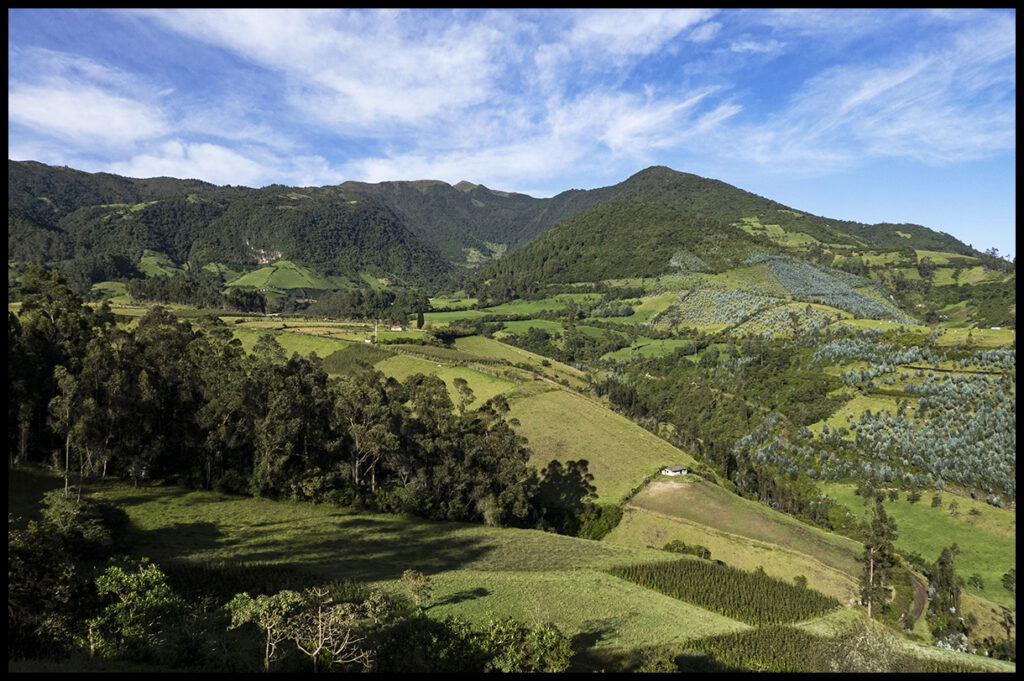
View from the Rose Cottage
The English owners had returned to the UK during the pandemic, but the local managers were doing a fine job. The llama that was there years ago was still mowing the grass, but decidedly not interested in being petted. He spit in my coffee when I tried.
Interestingly, the blue-grey trees growing in the background are eucalyptus, native to Australia. Eucalyptus trees grow fast and reach a harvestable size for pulpwood/paper, or biofuel in as little as 6 to 8 years. They are a staple crop in many S. American countries.
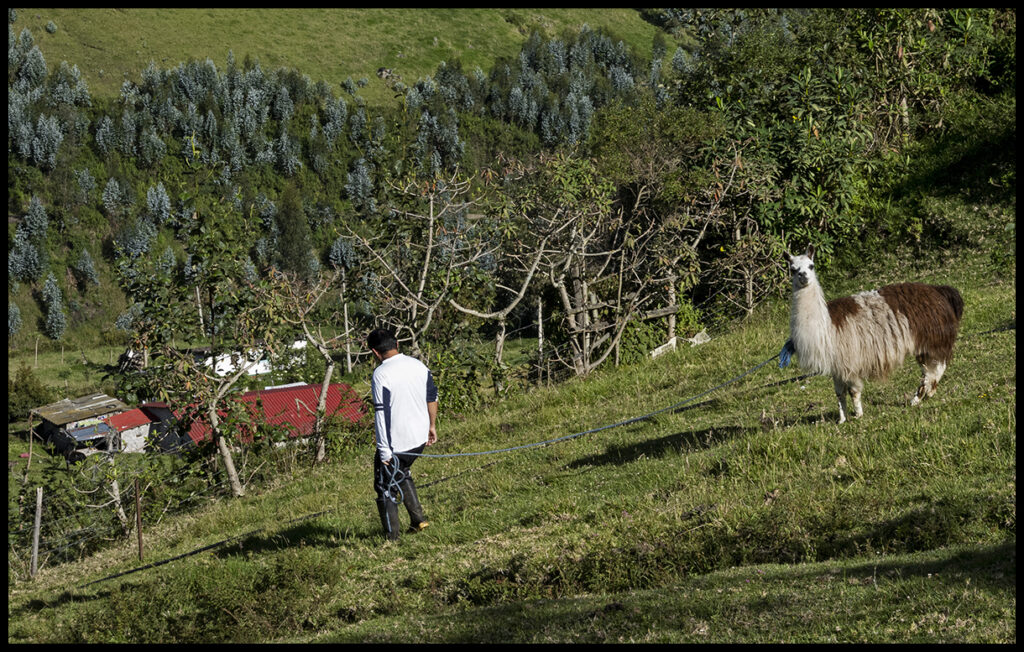
Llama being led to its lawn tending duties.
Otavalo is known for its market…a huge open-air affair with all sorts of crafts and food. Craig bought a sweatshirt as it’s cold in the mountains, and another hat (the one from the same market years ago was getting shabby).
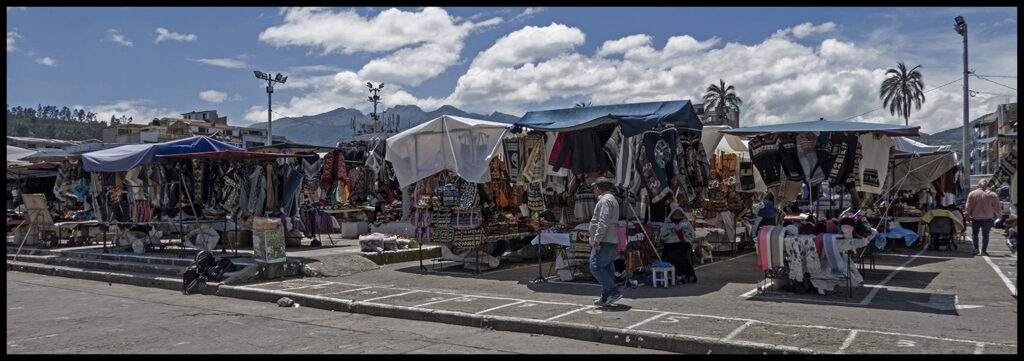
Otavalo market… Open every day with the big day being Saturday when all the locals come to shop.

One of several plazas in Otavalo. There are many indigenous people living in the area and all dress in their traditional outfits.
We decided to visit Lago Mojanda, a protected ecological zone up the road from our cottage. The altitude at the lake is just a few feet shy of 14,000 ft. Driving slowly up the ancient cobble road
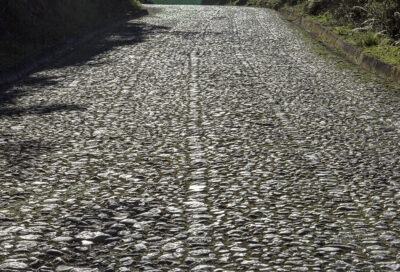
Cobble road photo from seven years ago. Sadly, the condition has deteriorated since then.
we saw a man plowing a field that was nearly vertical. Two cows pulled the plow: when they make the turn, one cow faces uphill to keep the plow from sliding down the hill, and one cow is perpendicular to that one to move the plow around the bend. In the photo the cows have already made the turn. So much of the agricultural land in the Andes is incredibly steep.
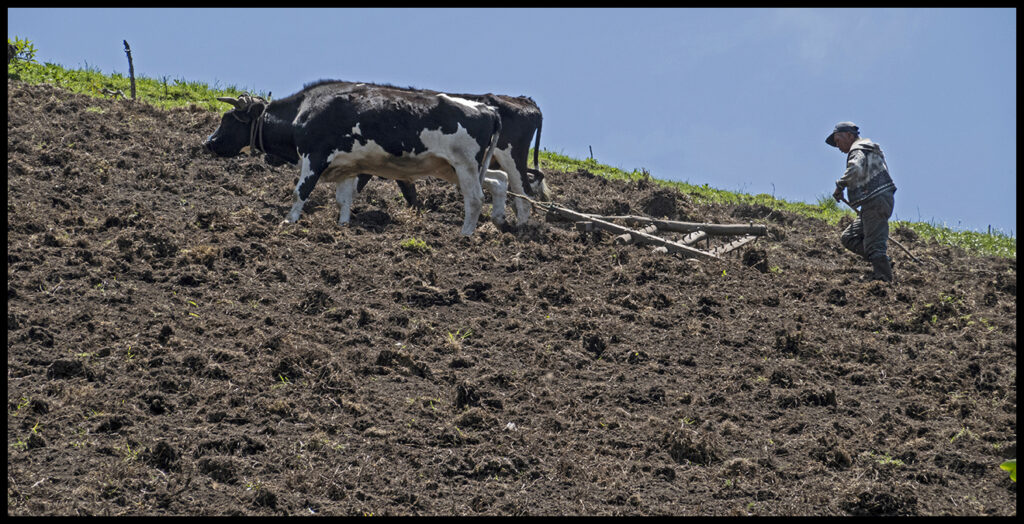
Plowing a nearly vertical field. It’s a lot steeper than it appears in the photo.
Arriving at the lake we had a picnic and then set out on a short walk. Before we got 100 yards, a woman jumped out of her truck with her son and asked me to take her picture with Craig. This wasn’t to be the last time this happened.
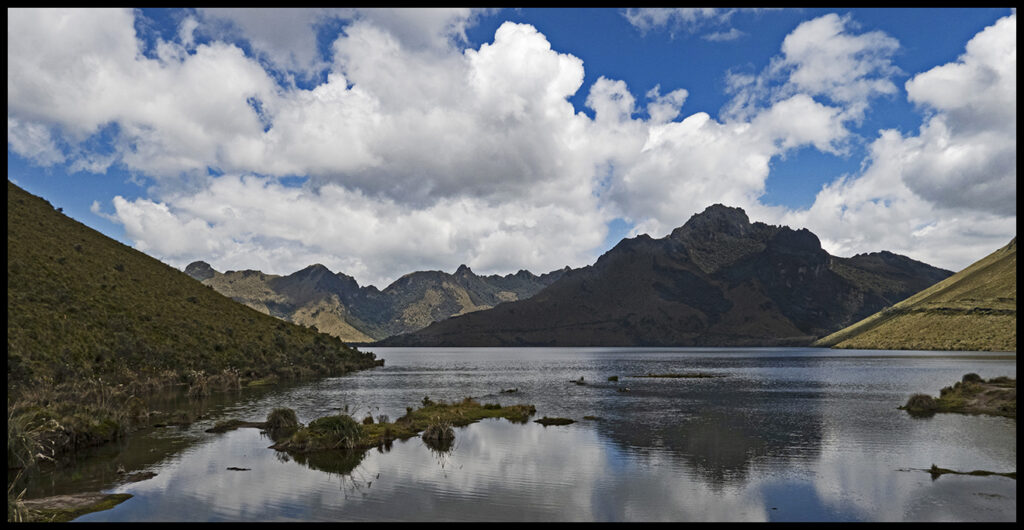
Lake Mojanda at 14,000 feet.
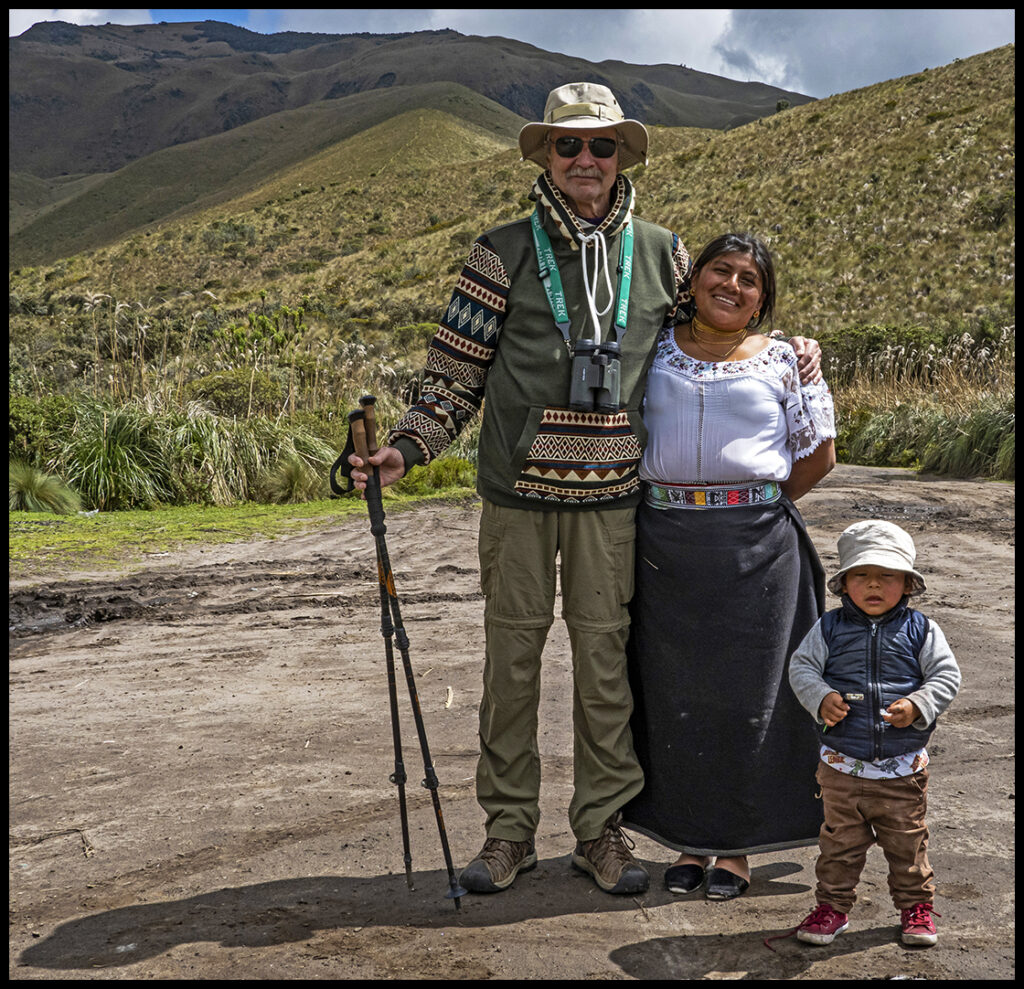
Craig in his new sweatshirt with a local woman and her not-altogether-thrilled son.
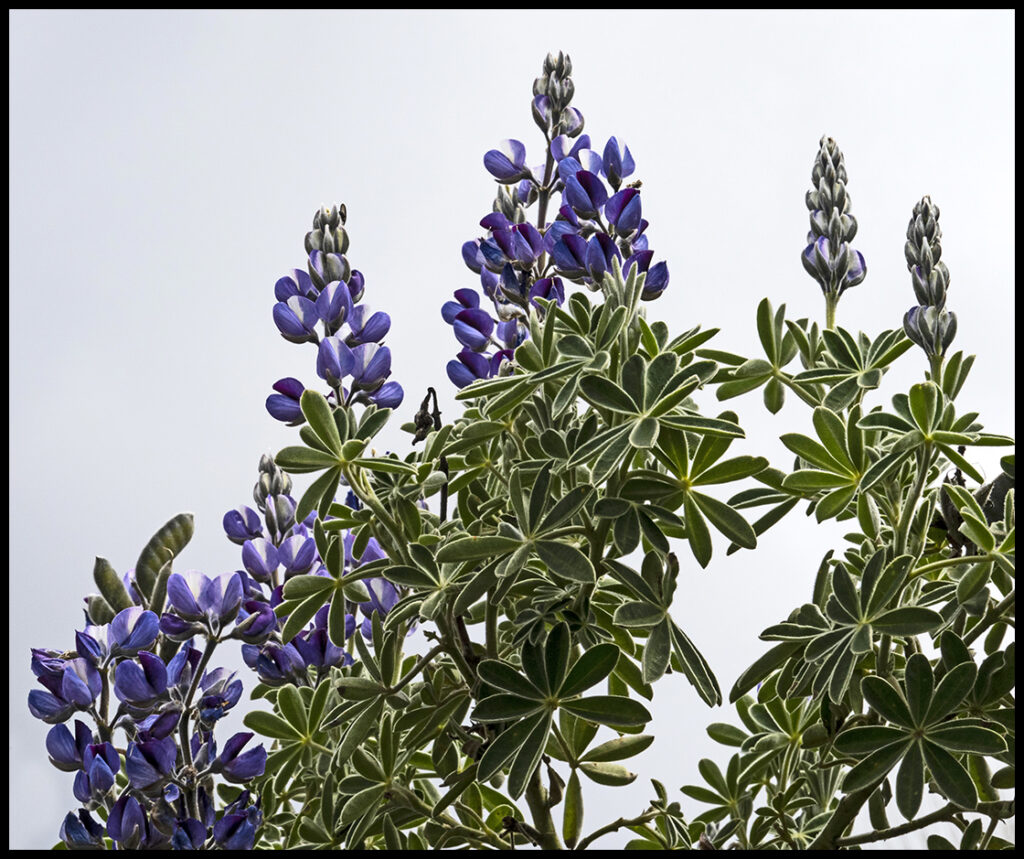
Lupine flowers along the trail.
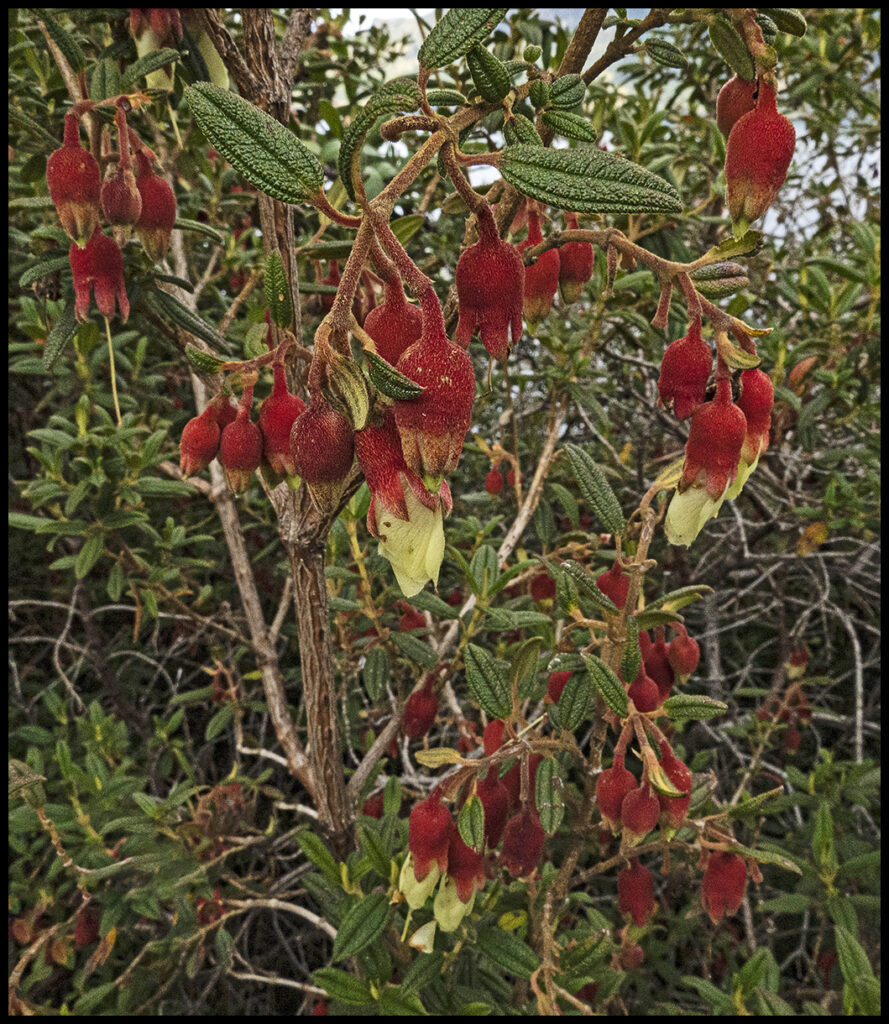
Unusual (for us) alpine flowers.
Leaving Otavalo I couldn’t pass up this contented cow. Ecuadorian cows don’t know how lucky they are not to be living on the parched range lands of many other countries.

Happy cow.
The car was having alignment issues that worried us, but the rental people refused to meet us on the weekend to switch cars so we drove very slowly over the Andes to spend a few days at the lovely little town of Baeza. If you ever find yourself in Baeza, be sure to stay at the Kopal Cabins and Pizzaria. The Dutch ex-pat, Koos Quellhorst, built his business from scratch.
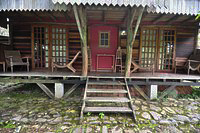
One of the cabins.
He is an amazing metal smith and wood worker and the cabins show off his building talents. The price to stay is more than reasonable, AND he speaks English.
The Ecuadorean economy suffered under the pandemic restrictions. It is bouncing back, but the years of stagnation can be seen in postponed highway maintenance and other subtle little ways.
In 1987 an earthquake wiped out Baeza. They rebuilt the town on higher, presumably more stable, ground. But they also rebuilt the old townsite with an eye to tourist accommodation. It is now the quieter option. Behind Hostería Kopal is a trail down to a river and waterfall. Along the trail can be seen all sorts of wonders. Before the trail enters the forest, some field birds can be seen.
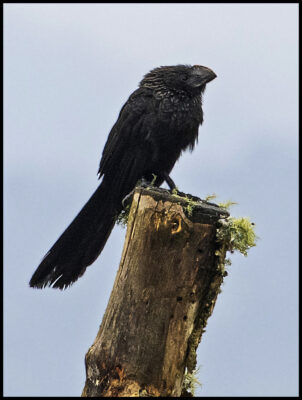
Smooth-billed Ani

Yellow-browed sparrow
Koos keeps a bird checklist of all that have been seen on his property. The list had 82 species recorded. On our hike we spotted one not on the list, a wintering Rose-breasted grosbeak, and managed to get a photo. We also saw some Blue-headed parrots flying over, but didn’t get proof. It was exciting for me to get to add to his list.
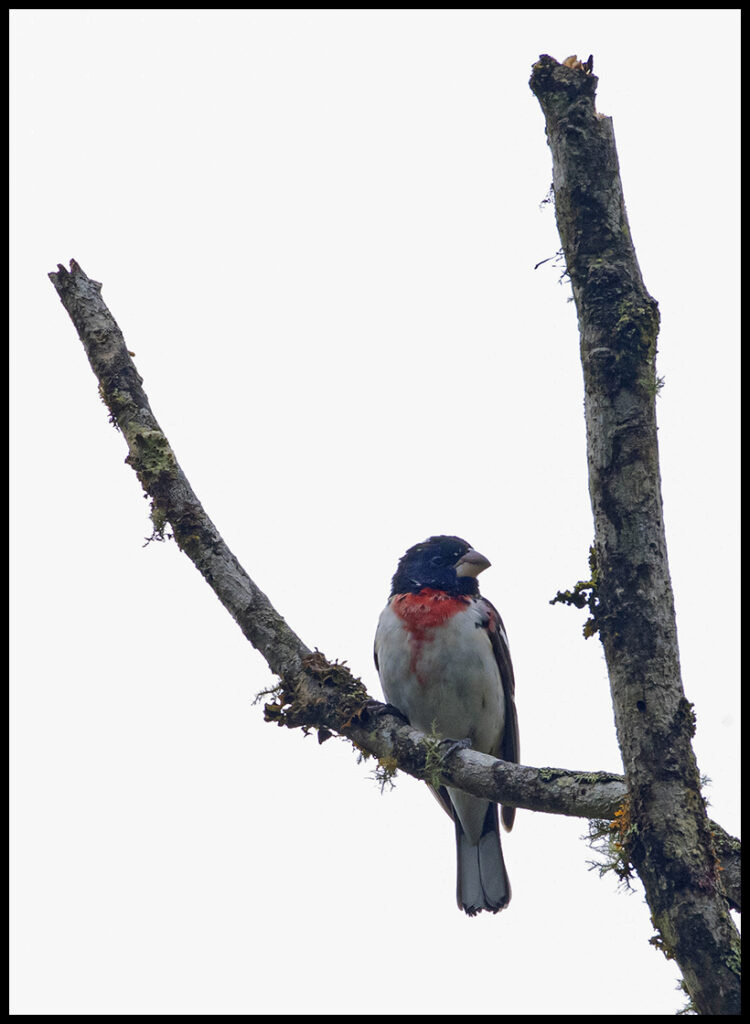
Wintering Rose-breasted grosbeak
Other sights along the trail…
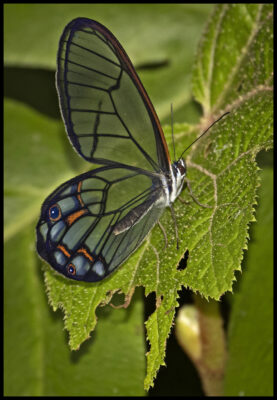
Clear-wing butterflies are common.
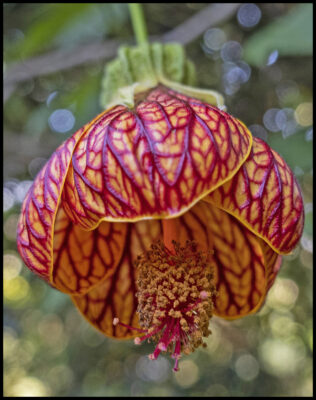
Callianthe or bouncing bell
But, the biggest thrill of all was witnessing 8 to 10 Andean Cock-of-the-Rock males all sitting near each other and singing away. Well, their version of singing is more like croaking. We were the only people there to see this incredible show. The lighting was terrible but I managed to get a few shots of these gorgeous birds.
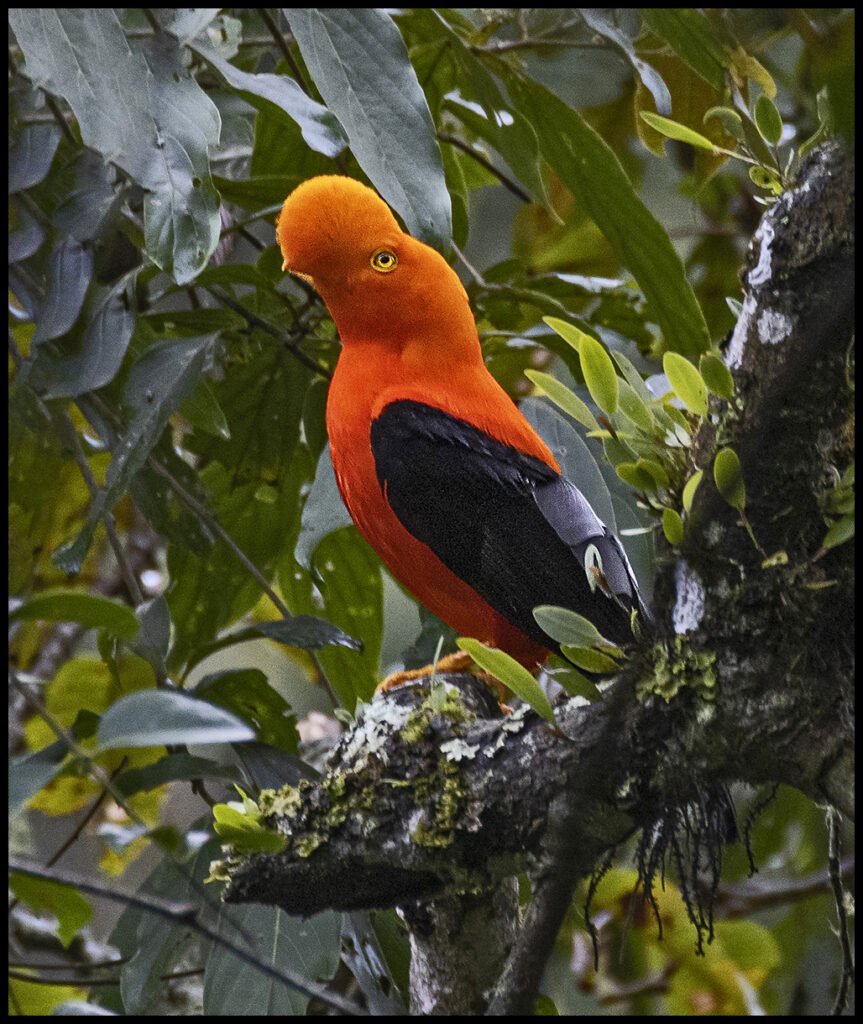
Andean Cock-of-the-Rock
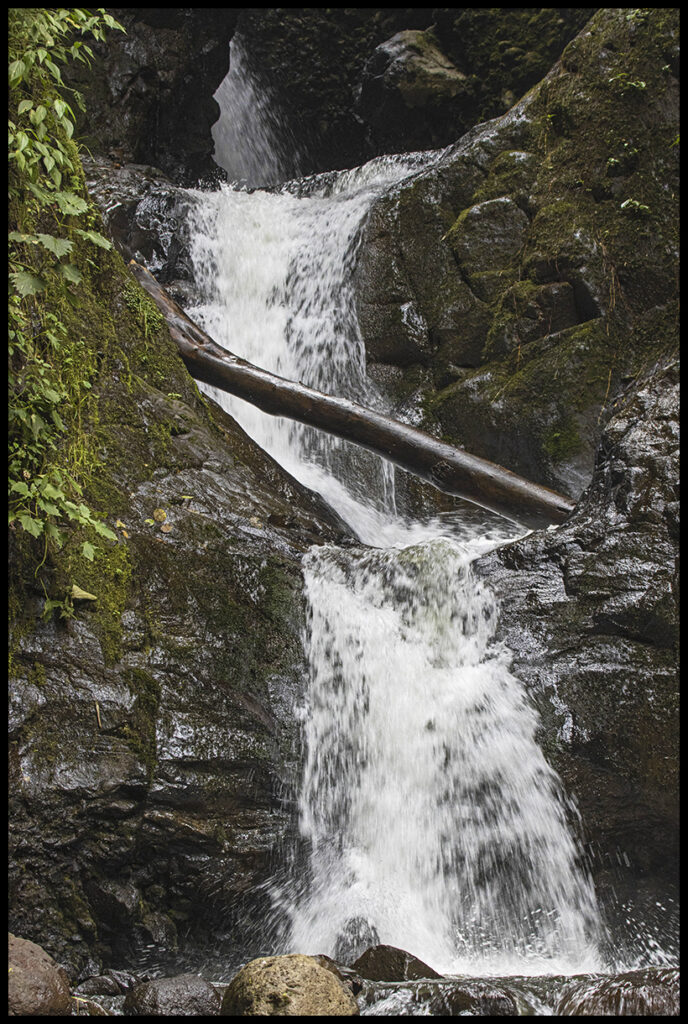
Waterfall at the end of the trail.
Back in town we wandered around re-acquainting ourselves with the old town. The funky little church still overlooks the uninspiring center plaza and the staircase to nowhere is still standing since 1987.
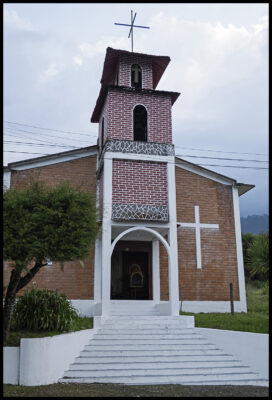
Old town church with fake bricks.
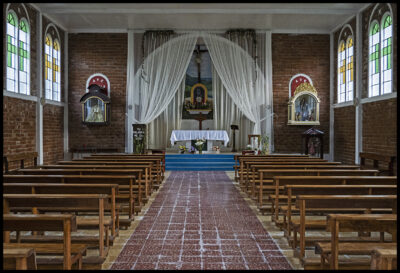
Church interior.
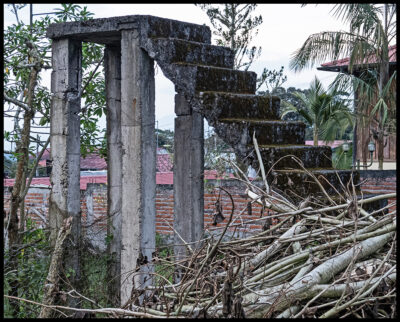
Stairs to nowhere.
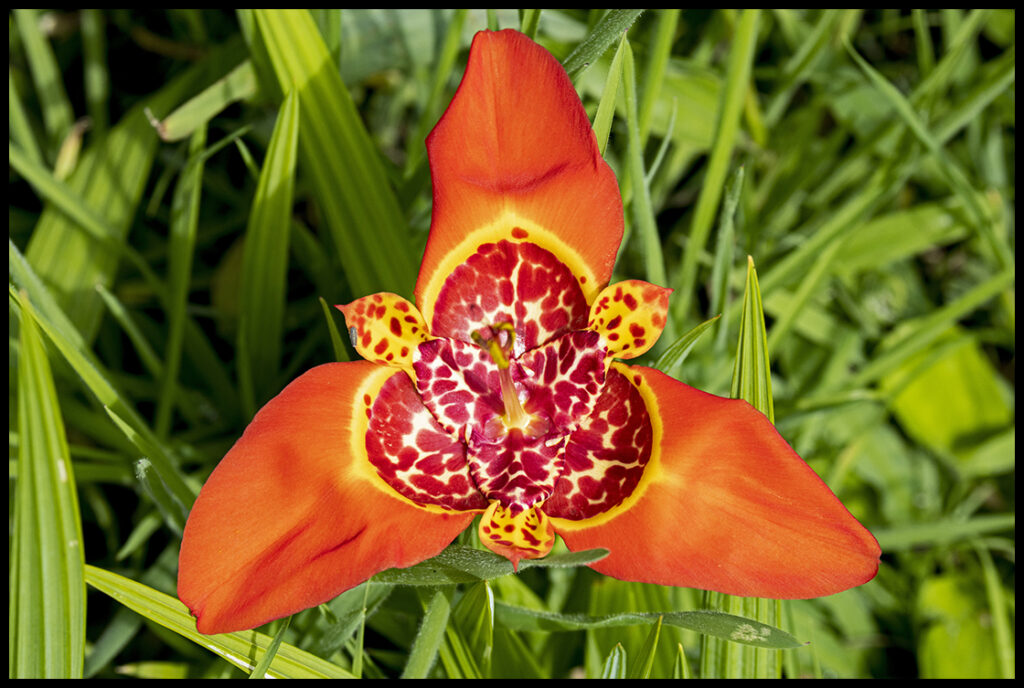
The same lilies still bloom in the plaza.
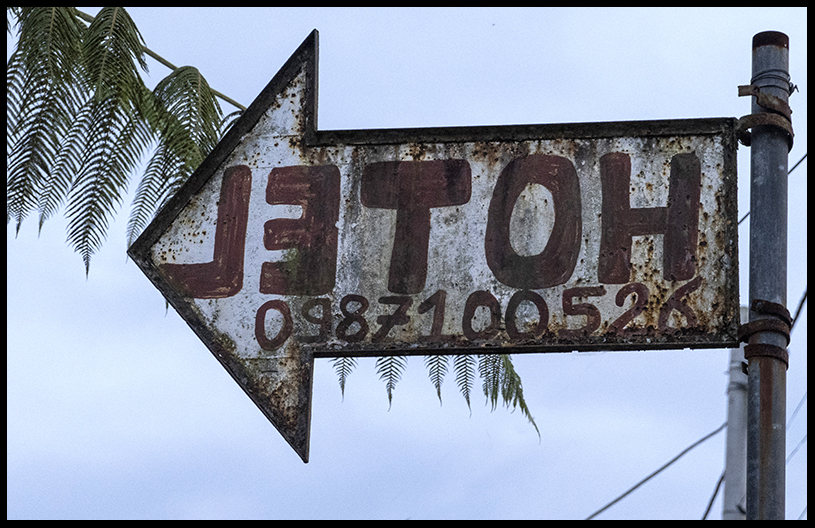
The same goofy sign still points to a mysterious hotel.
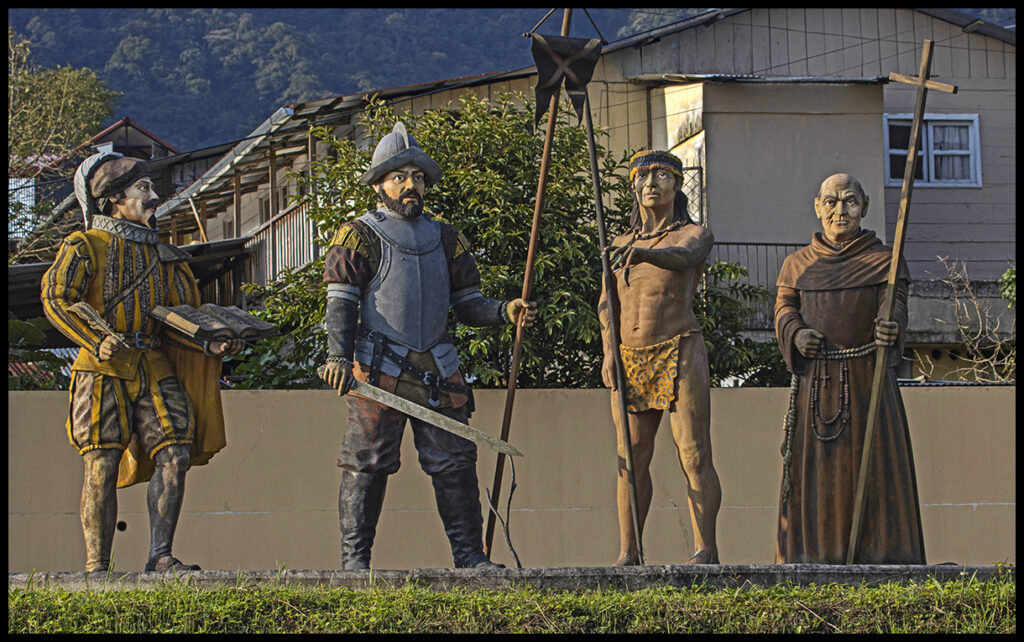
And the same statues stand guard near the highway.
Try to imagine what the planet would be like if the Europeans had stayed home for another 400 years. Certainly a different division of resources than we have today. For better or worse; who’s to say?
We hiked a road uphill from the town.
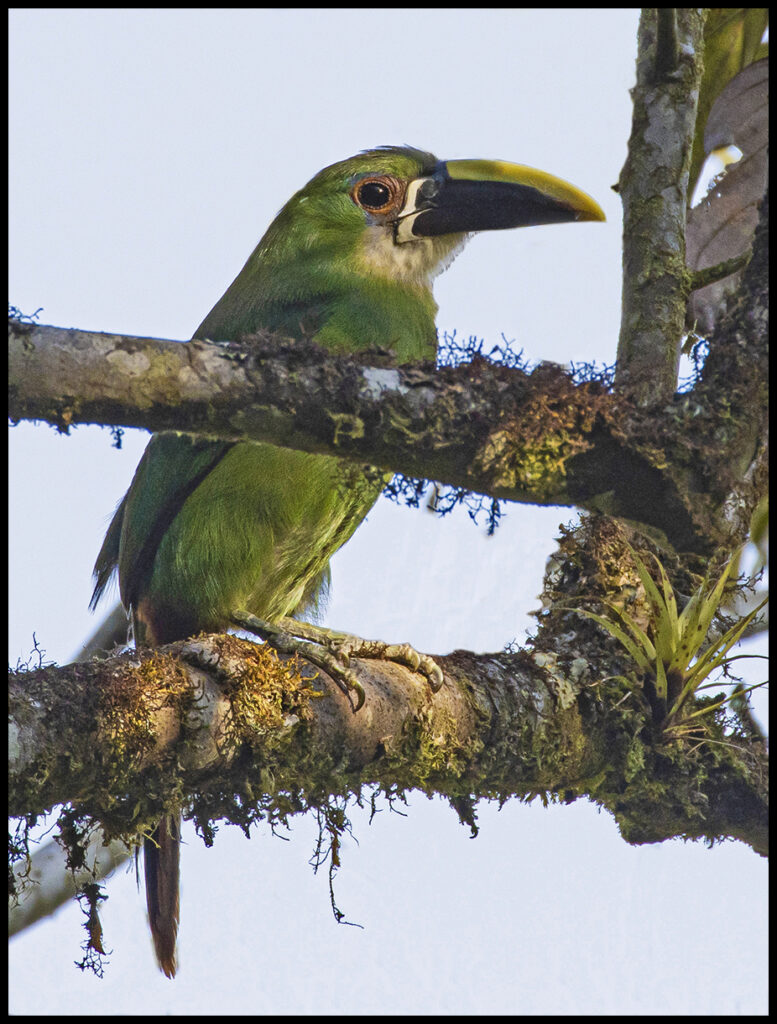
We saw an Emerald Toucanet…
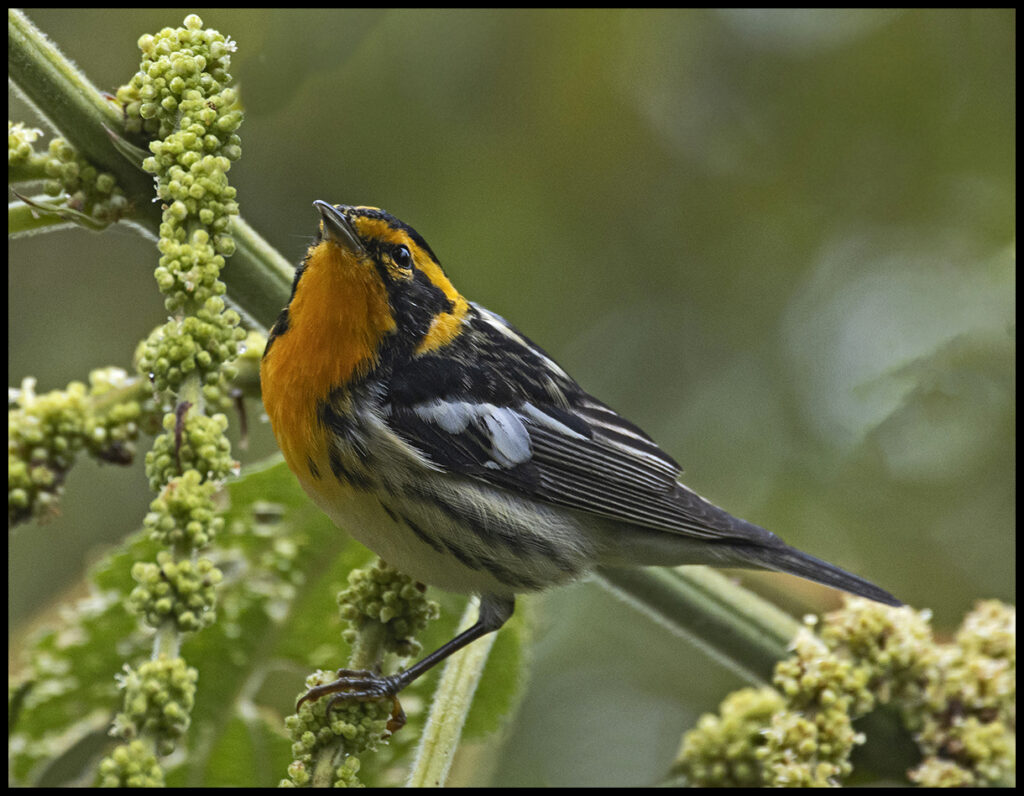
And a wintering Blackburnian warbler.
We took a day trip south to another canyon to have a look around. Not much in the birding department, but lots of plants and butterflies.

Different species of clearwing butterfly.
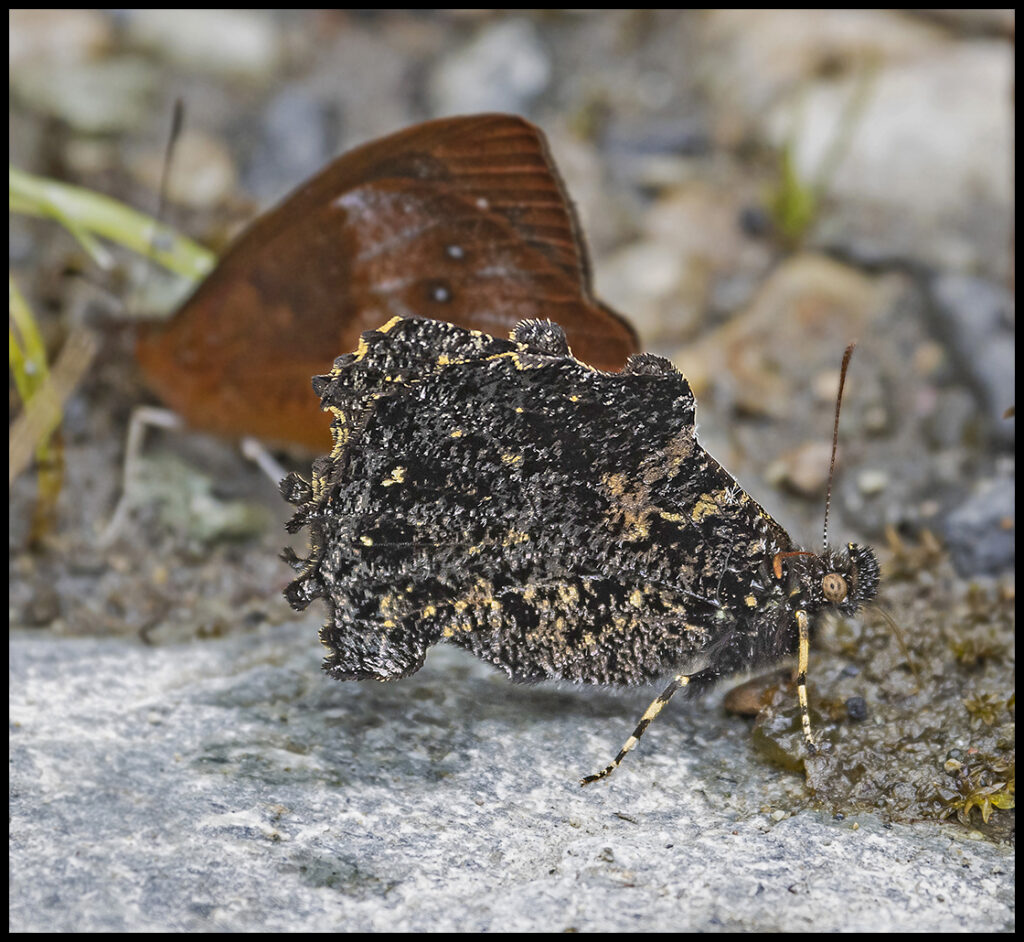
One of the weirdest and best camouflaged butterflies I’ve ever seen.

Flowers new to me.
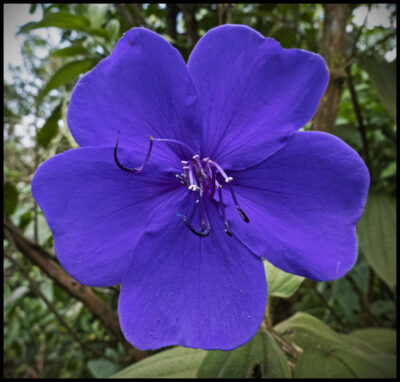
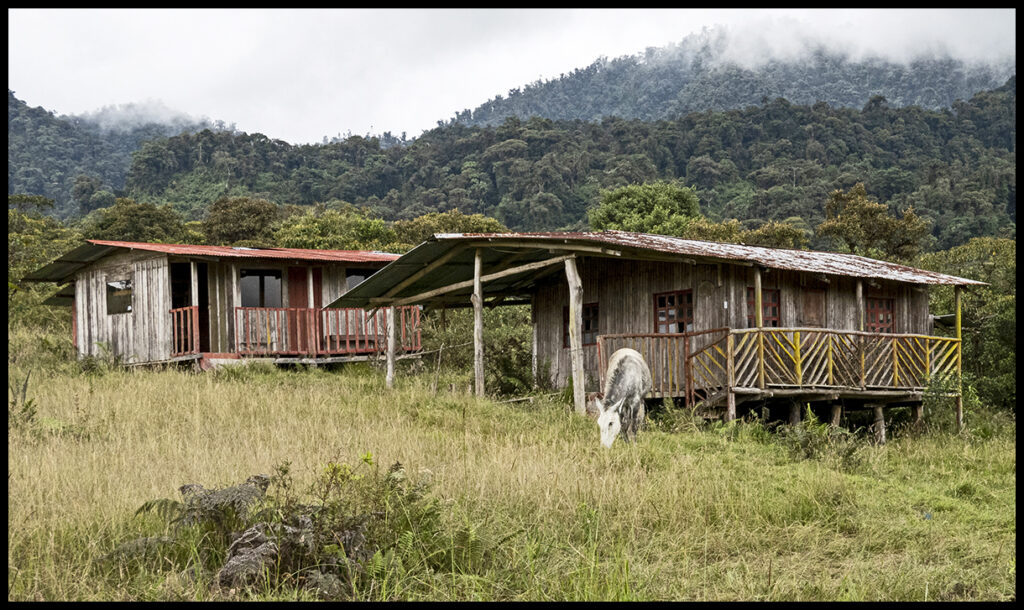
Typical mountain house.
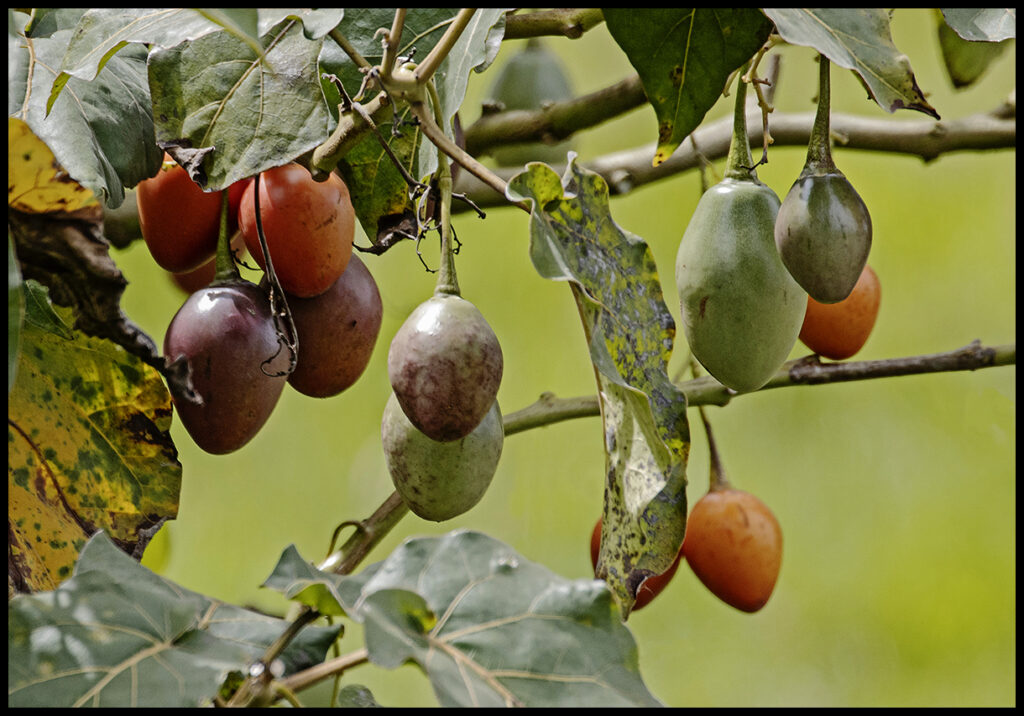
Along the mountain road were tree tomato (Tamarillo) farms. These are a popular S. American fruit. (I prefer other exotic Ecuadorian fruits.)
Next day’s plan was to revisit San Raphel Falls, Ecuador’s highest at 150 meters. I’m glad we told Koos where we were going because he broke the sad news to us. The falls are no longer. No one is exactly sure what happened, but it is suspected that a hydroelectric project’s diversion reservoir, financed and built by a Chinese company to the tune of $2.7 billion just 12 miles upstream in a geologically active area, might be the culprit. Government engineers say thousands of cracks have emerged in the plant’s dam. At the same time, the Coca River’s mountainous slopes are eroding, also threatening to damage the dam. The whole mess is a financial nightmare for Ecuador, still on the hook for payments to the Chinese.
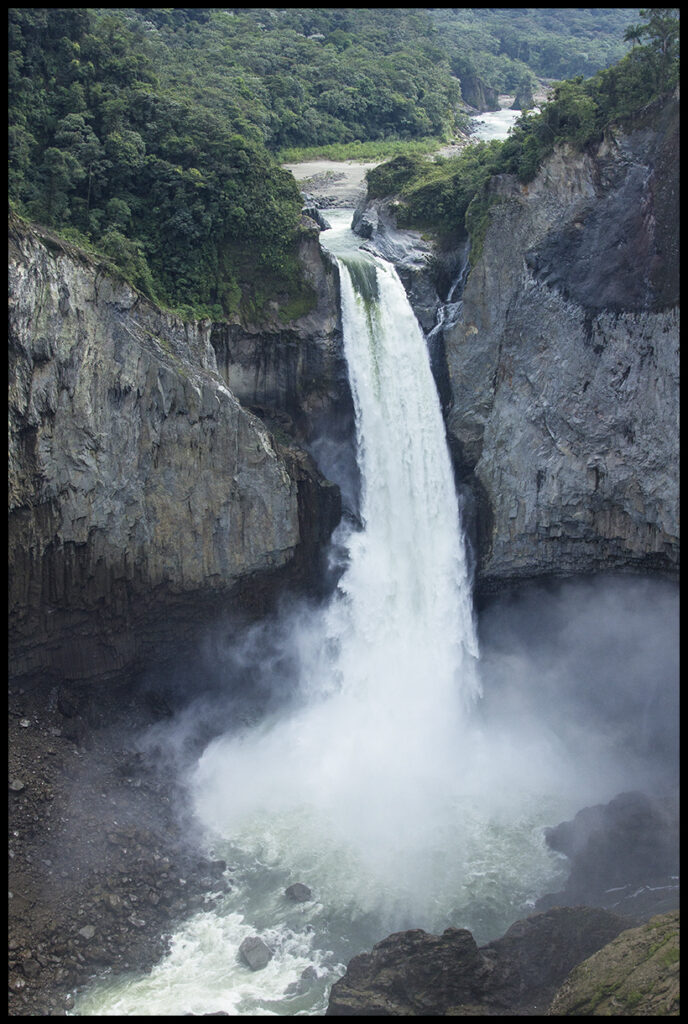
The once and no longer, San Raphel falls…the highest in Ecuador. Photo from 2016.
We close the door on Baeza now. George Cribb, our new friend from our jungle trip joins us as we head to Mindo, a cloud forest town beloved by naturalists the world over.
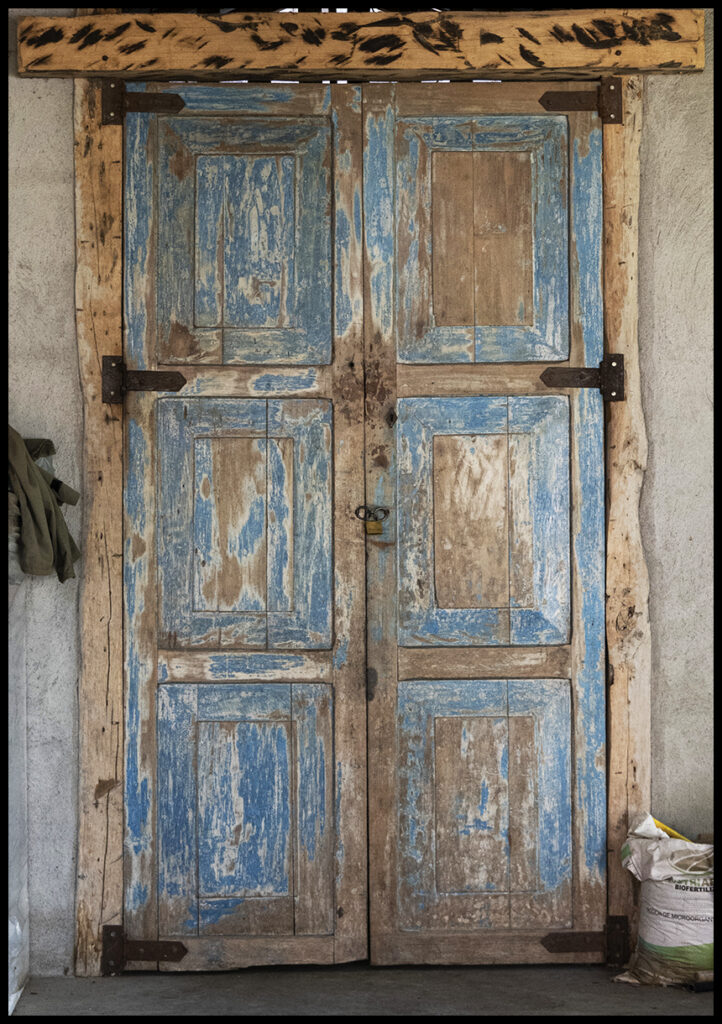
The laundry door at Kopal.
On the way we drive by Quito, marveling at the steep canyons the city is built around. High-rises teeter on cliff edges, and traffic is horrid. George takes photos while I concentrate on driving and Craig expertly navigates.
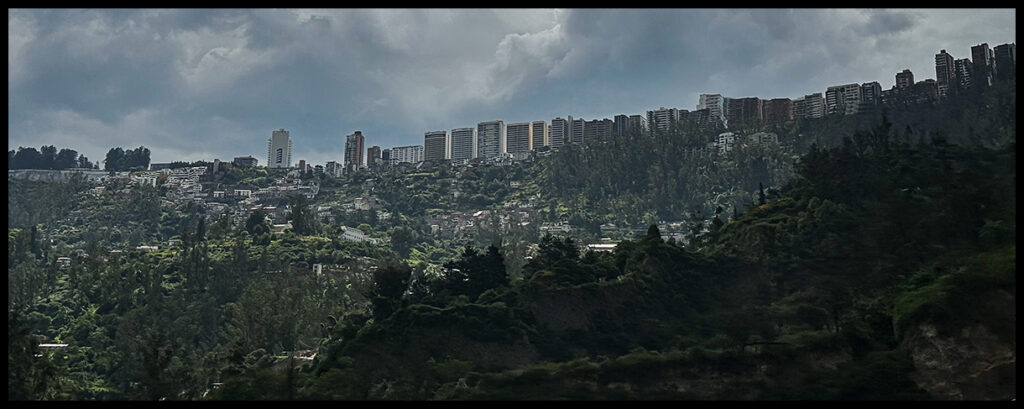
Apartment buildings cling to cliff edges.
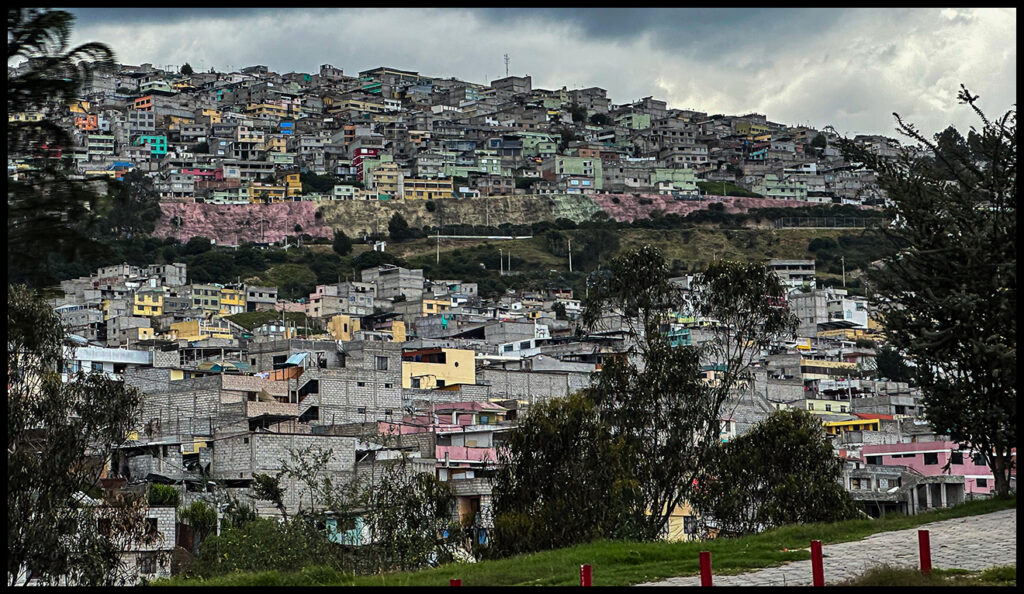
Quito stretches on forever.

Finally we are so hungry we veer off the highway on a steep road to a mountain top restaurant. Quito lies in the valley below…
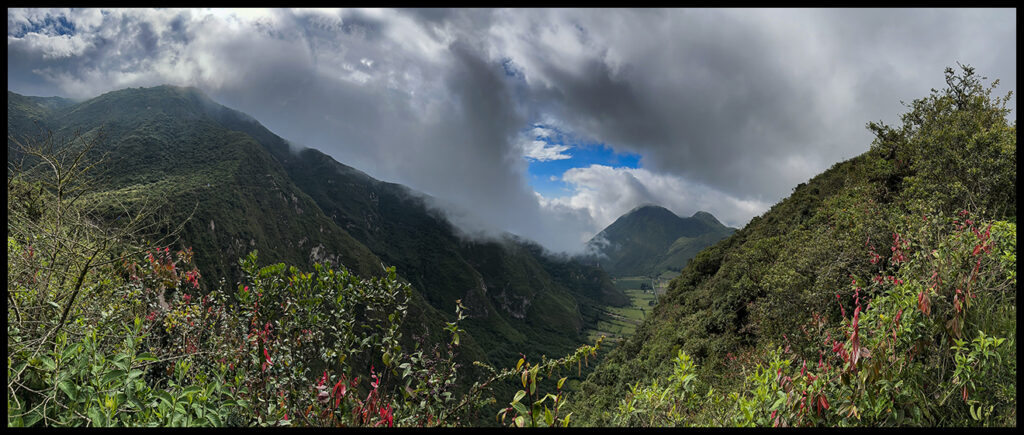
…But on the other side, the view is of the natural cloud forest to come.
